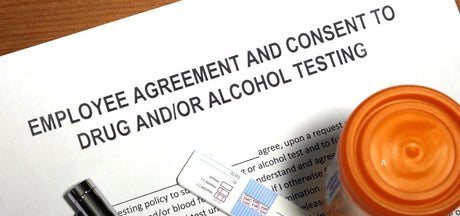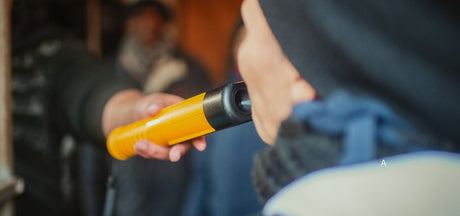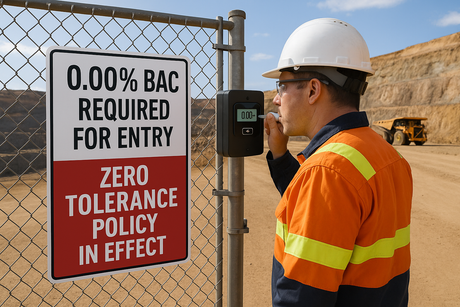Mining is one of Australia’s most safety-critical industries. Workers operate heavy machinery, handle explosives, and work in remote, high-risk environments where a single mistake can have catastrophic consequences. That’s why drug and alcohol (D&A) testing is a non-negotiable part of any mine site’s safety program.
To meet their obligations under work health and safety (WHS) laws, mining operators must eliminate impairment risks wherever possible. Most mines adopt a zero-tolerance approach, typically requiring a 0.00% blood alcohol concentration (BAC) for anyone entering the site. This ensures that all personnel are fit for duty, reduces the chance of accidents, and protects companies from legal and reputational fallout.
Understanding the Legal Landscape
Australian WHS legislation places a duty of care on Persons Conducting a Business or Undertaking (PCBUs) to manage risks, including those posed by drugs and alcohol. Safe Work Australia makes it clear that in industries like mining, workers may be prohibited from being affected by drugs or alcohol while at work. Regulators such as WorkSafe Victoria require mine operators to have a formal strategy for managing these risks.
Having a well-written D&A policy is essential. It must set clear expectations for everyone on site, explain what substances are prohibited, outline the types of testing that will be used, and detail the process followed if someone returns a non-negative result. A clear policy reduces confusion and ensures consistent enforcement.
The Role of Australian Standards and Certified Devices
Mining companies should align their testing procedures with AS/NZS 4308 (urine testing) and AS/NZS 4760 (saliva testing). These standards specify everything from how samples are collected and stored to cut-off levels and laboratory confirmation requirements. Using compliant equipment is just as important as following the right process.
This is where Andatech’s industrial breathalysers and drug test kits play a crucial role. Wall-mounted and portable breathalysers are certified to AS 3547:2019, delivering accurate BAC readings and supporting compliance with zero-tolerance policies. To maintain this accuracy over time, Andatech provides regular calibration services, a critical step in ensuring devices continue to perform reliably and that results remain legally defensible. Andatech is also a NATA-accredited calibration centre, giving businesses confidence that all servicing meets strict national standards. Similarly, Andatech’s saliva and urine drug test kits comply with Australian Standards, helping ensure that on-site screening results are admissible and stand up to scrutiny if ever challenged.
Common Compliance Pitfalls (and How to Avoid Them)
Even with good intentions, mining companies sometimes misstep. Here are common pitfalls and how to sidestep them:
|
Pitfall |
Risk |
How to Avoid It |
|
Failing to confirm on-site “non-negative” (or preliminary positive) results with lab confirmation |
Can lead to wrongful dismissals, legal challenges, undermined trust |
Always require a confirmatory test via a NATA-accredited lab before taking disciplinary action. Document the steps. |
|
Not updating policies/public communication after standard changes |
Employees may be unaware of new cut-offs or revised procedures → inconsistent enforcement and legal risk |
Clearly communicate policy changes; retrain staff; update written materials, site signage. |
|
Inconsistent enforcement |
Could be seen as unfair or discriminatory; undermines safety culture |
Apply policies uniformly; supervisors trained; clear documentation when enforcement is needed. |
|
Improper training of test collectors / poor chain of custody |
Sample contamination or mishandled samples could invalidate results; legal consequences |
Use accredited collection agencies or properly trained staff; rigorous chain of custody; well-documented procedures. |
|
Ignoring legitimate prescription medications |
May result in disputes, possible discrimination; legal exposure if policy doesn’t allow for legitimate medications |
Include procedure for disclosure of prescribed medications; assess risk; possibly employ “fitness for duty” measures rather than automatic sanctions. |
|
Policy changes without consultation |
Could lead to unfair dismissal findings or FWC rulings (see below) |
Consult employees, safety representatives; give notice; ensure changes are documented, communicated, understood. |
Real-Life Case: “Zero-tolerance policy backfires”
A recent Fair Work Commission case (Hutchison Ports Sydney, 2025) involved sacking a worker after he tested at 0.017% BAC under a new zero BAC policy. The decision went against the employer because signage and communication about the policy change were inconsistent, workers believed the prior limit (0.02%) applied.
Best Practice for Testing Programs
An effective D&A program is multifaceted. Pre-employment screening ensures new hires meet safety expectations from day one. Random testing, carried out without notice, is one of the most effective deterrents to unsafe behaviour, and post-incident testing helps identify whether impairment played a role in accidents or near-misses. For-cause testing triggered by supervisor observations should be documented carefully and acted on promptly.
In all these cases, the use of reliable, fast, and easy-to-deploy equipment is essential. Andatech’s portable breathalysers allow supervisors to perform on-the-spot tests with minimal downtime, while fixed wall-mounted units can be placed at entry points for automated, self-administered testing before a shift starts. Drug testing kits designed for workplace use, provide immediate screening results, with the ability to send non-negative samples for laboratory confirmation.
Education is another pillar of best practice. Workers should receive training at induction and through regular refresher sessions, so they understand how testing works, why it matters, and how long substances can remain in the body. Toolbox talks and EAP programs can help support workers who may need assistance managing substance issues rather than simply penalising them.
Building Fairness and Trust
Procedural fairness must underpin any testing program. Workers who return a non-negative result should be stood down safely pending lab confirmation, rather than dismissed immediately. If confirmed positive, they should be given the chance to explain or provide evidence of prescribed medications. Applying the policy consistently and using accredited devices helps reassure employees that the goal is safety, not punishment.
Creating a Culture of Safety
When mining companies invest in high-quality, certified testing devices and communicate clearly with their workforce, they create a safety culture where everyone understands the rules and the reasons behind them. A combination of policy, technology, and education leads to higher compliance, fewer incidents, and a safer, more productive mine site.
Key Takeaways
Mining companies can protect workers and meet legal obligations by developing a clear D&A policy, aligning with AS/NZS 4308 and 4760, and using reliable, standards-compliant equipment. Breathalysers and drug testing kits are the practical tools that turn a written policy into a working safety program. Combined with confirmatory testing, documentation, and employee education, they help reduce risk and create a culture where safety comes first.
Ensure your mine site’s program is compliant and backed by accurate, standards-approved equipment. Contact Andatech today to learn about our range of wall-mounted and portable breathalysers, saliva and urine drug test kits, and calibration services. We are ISO 27001 certified, which means our products are certified, our calibration tests are accredited, and we adhere to globally recognised standards for information security, processes, and technology.





